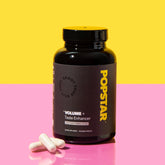

Key Takeaways
Do a testicular self-examination once a month
The shower is the perfect place for it
Know where your epididymis and spermatic cord are located
Watch for testicular lumps, scrotal swelling, or changes in shape or size
Early detection of testicular cancer symptoms makes all the difference
The Testicle Self-Exam: It’s Not Weird, It’s Smart
Gentlemen, it’s that time again. Not tax season. Not your colonoscopy reminder. This one’s quicker and way less awkward. It’s time to give your boys a proper once-over and make sure the family jewels aren’t hiding any surprises.
We’re talking testicle self-exams. It’s easy. It’s important. You don’t need mood lighting or a guided meditation. Just work it into your shower routine and feel better knowing everything’s in place.
Shower Time Is Ball Check Time
You’re already naked. You’re already in the steam. You’ve got nothing but time. So why not use that moment for something more productive than pretending you're not thinking about work?
Warm water helps relax the scrotum which makes it easier to feel what’s normal and what’s not. So while you’re planning your fantasy football draft, take 30 seconds to check the equipment.
Scrub First. Touch Second.
Clean hands first, fellas. No one wants to manhandle their goods with fingers that just tore into spicy wings or assembled IKEA furniture without the manual. Use soap. Rinse well. Now you’re ready for the main event.

One Testi at a Time
Here’s your no-nonsense testicular exam guide. You don’t need a white coat or a stethoscope. Just your hands, some warm water, and a willingness to get a little familiar with your own anatomy.
Gently hold one testicle in your palm
Roll it between your thumb and fingers
Check for changes in size, shape, or consistency
Feel for any testicular lumps, swelling, or sore spots
Locate the epididymis, a soft coiled tube on the back of each testicle
Find the spermatic cord, a rope-like structure above each testicle
Everything should feel smooth and consistent. You’re not searching for treasure. You’re making sure the map hasn’t changed.
What’s Normal and What’s Not
Most lumps are harmless. But some are not. A testicular lump could be a sign of testicular cancer. It’s the most common cancer in men ages 15 to 34. And yes, it can still show up after 40.
The good news is that when caught early, testicular cancer is over 99 percent curable. That makes testicular cancer early detection a no-brainer.
You should also keep an eye out for:
Scrotal swelling
A feeling of heaviness
Dull pain or aching
Anything that suddenly feels different
If something seems off, don’t ignore it or try to power through. Make an appointment. Your future self will thank you.
Make It a Monthly Habit
Here’s a trick. Set a recurring reminder on your phone. Maybe the first Sunday of the month. Right after that long shower when you’re hiding from your to-do list and the dog that needs walking.
You only need 30 seconds. That’s less time than it takes to find the TV remote. This is one of the simplest forms of testicular cancer prevention out there.
Why Bother with Testicle Self Exams?
Testicular cancer symptoms aren’t always dramatic. That’s why knowing how to check your testicles gives you a major advantage. Regular checks help you notice subtle changes in testicular health before they become big issues.
Even if nothing’s wrong, knowing you’re all good brings peace of mind. Like remembering where you parked without using the app. Victory.
Real Talk About Men's Health
Men’s health includes the parts you don’t usually talk about. And that includes testicles. You don’t have to live at the gym or drink kale to take care of yourself. You just need to check in once a month.
A quick testicular self-examination can help identify testicular cancer risk factors early. It’s easy. It’s smart. And it’s a habit worth forming.
Popstar is all about encouraging guys to take better care of themselves. That includes below the belt. So let’s make testicular cancer awareness a regular part of the conversation.
Conclusion
You don’t need a medical degree or fancy tools. You just need a hand, a little time, and the willingness to check in with your body. Doing a testicular self-exam every month can help you catch issues early and keep your testicular health on track.
Your testicles are brave. You should be too. If something feels off, say something. The earlier you catch it, the better your chances of taking care of it quickly and completely.
Take care of your balls. And your bedroom.
Want to go the extra mile? Support your reproductive health with Popstar Volume + Taste Supplement. Want to last longer in bed too? Our Delay Spray is a game changer. Because when you take care of what’s below the belt, everything else gets better too.
Frequently Asked Questions
How often should I check my testicles?
Once a month. Set a reminder on your phone so you don’t forget.
What should I feel during the exam?
Each testicle should feel smooth and oval-shaped. You should also be able to feel the epididymis behind it and the spermatic cord above it.
Is it normal for one to be bigger than the other?
Yes. Small differences in size are common. But a sudden change, pain, or swelling needs medical attention.
What does a testicular lump feel like?
Usually firm and painless. If you find one, don’t panic. But do see a doctor.
What are some warning signs of testicular cancer?
A new lump, swelling, heaviness, or a dull ache in your lower abdomen or groin. Don’t wait. Call your doctor.










